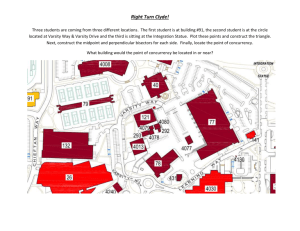CSCE 4523 DBMS – Midterm Study Guide
advertisement
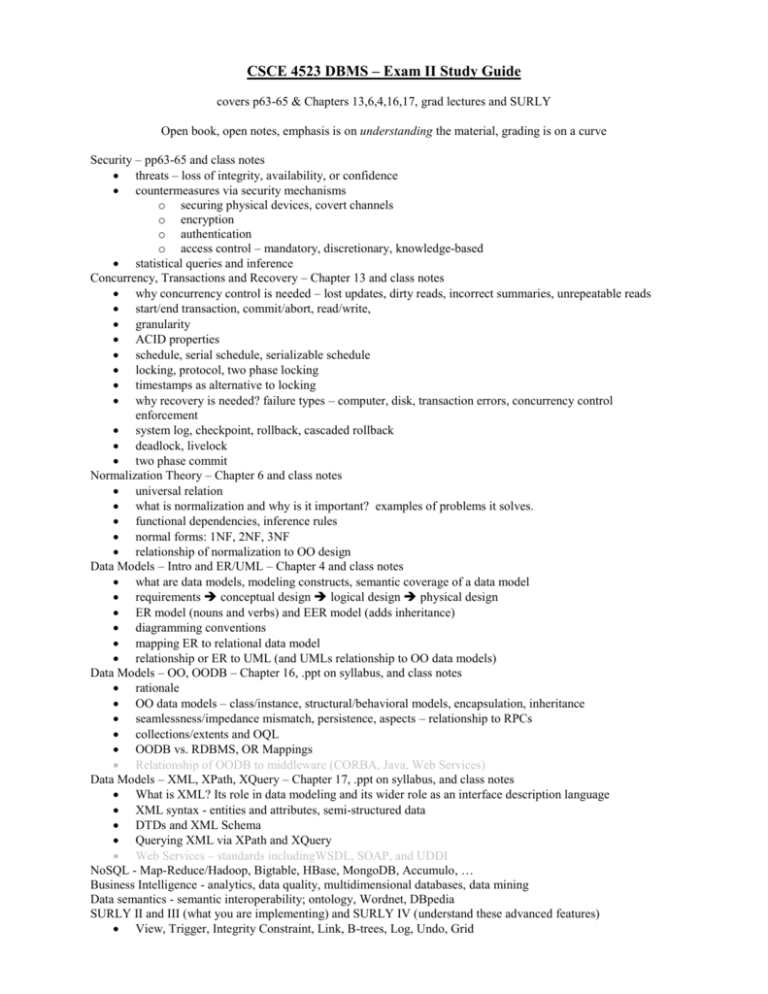
CSCE 4523 DBMS – Exam II Study Guide covers p63-65 & Chapters 13,6,4,16,17, grad lectures and SURLY Open book, open notes, emphasis is on understanding the material, grading is on a curve Security – pp63-65 and class notes threats – loss of integrity, availability, or confidence countermeasures via security mechanisms o securing physical devices, covert channels o encryption o authentication o access control – mandatory, discretionary, knowledge-based statistical queries and inference Concurrency, Transactions and Recovery – Chapter 13 and class notes why concurrency control is needed – lost updates, dirty reads, incorrect summaries, unrepeatable reads start/end transaction, commit/abort, read/write, granularity ACID properties schedule, serial schedule, serializable schedule locking, protocol, two phase locking timestamps as alternative to locking why recovery is needed? failure types – computer, disk, transaction errors, concurrency control enforcement system log, checkpoint, rollback, cascaded rollback deadlock, livelock two phase commit Normalization Theory – Chapter 6 and class notes universal relation what is normalization and why is it important? examples of problems it solves. functional dependencies, inference rules normal forms: 1NF, 2NF, 3NF relationship of normalization to OO design Data Models – Intro and ER/UML – Chapter 4 and class notes what are data models, modeling constructs, semantic coverage of a data model requirements conceptual design logical design physical design ER model (nouns and verbs) and EER model (adds inheritance) diagramming conventions mapping ER to relational data model relationship or ER to UML (and UMLs relationship to OO data models) Data Models – OO, OODB – Chapter 16, .ppt on syllabus, and class notes rationale OO data models – class/instance, structural/behavioral models, encapsulation, inheritance seamlessness/impedance mismatch, persistence, aspects – relationship to RPCs collections/extents and OQL OODB vs. RDBMS, OR Mappings Relationship of OODB to middleware (CORBA, Java, Web Services) Data Models – XML, XPath, XQuery – Chapter 17, .ppt on syllabus, and class notes What is XML? Its role in data modeling and its wider role as an interface description language XML syntax - entities and attributes, semi-structured data DTDs and XML Schema Querying XML via XPath and XQuery Web Services – standards includingWSDL, SOAP, and UDDI NoSQL - Map-Reduce/Hadoop, Bigtable, HBase, MongoDB, Accumulo, … Business Intelligence - analytics, data quality, multidimensional databases, data mining Data semantics - semantic interoperability; ontology, Wordnet, DBpedia SURLY II and III (what you are implementing) and SURLY IV (understand these advanced features) View, Trigger, Integrity Constraint, Link, B-trees, Log, Undo, Grid
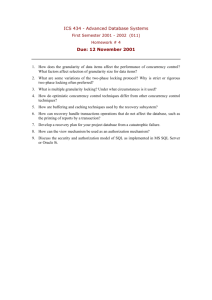



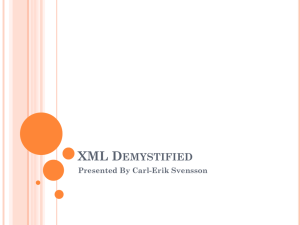
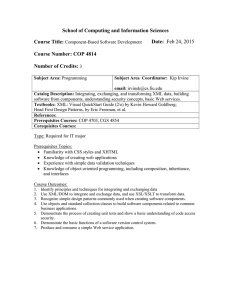
![[#CARBON-13743] Key store password of catalina](http://s3.studylib.net/store/data/007841975_2-b5be293be17dfbfd4fa5374476b625ea-300x300.png)




